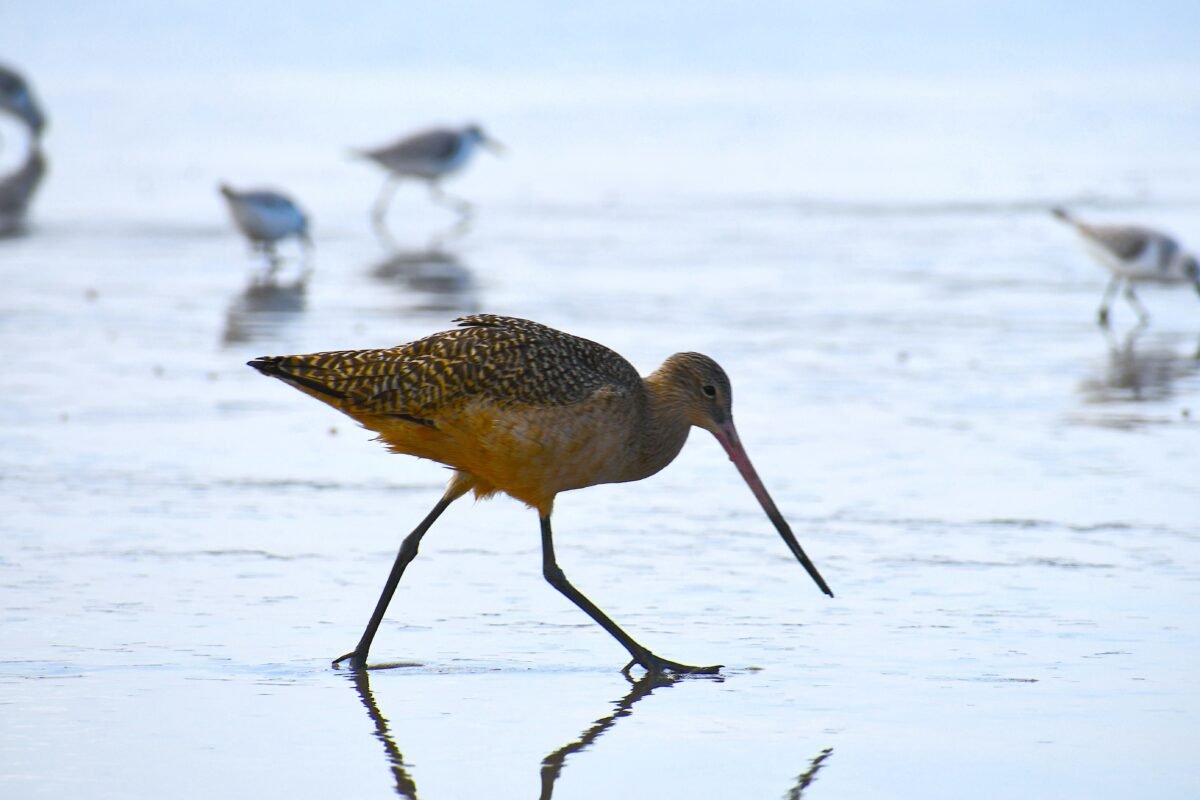For migratory birds that spend days flying across countries, continents, and oceans, a wrong turn or exhaustion can be fatal. However, a 90-degree turn has earned one young bird a place in the history books.
As reported by ABC News, the five-month-old bar-tailed godwit broke the record for long-distance migration following a non-stop, 11-day flight from Alaska to Tasmania.
The bird began its record-breaking 11-day journey on 13 October from the wetlands of the Yukon Kuskokwim Delta in Alaska.
The bird flew to the Aleutian Islands, past the west coast of Hawaii, down to New Caledonia, and over the Tasman Sea, where it finished its journey in Tasmania.
The 13,560-kilometre journey (8300 miles) smashed the previous record. The previous record was held by an adult male bar-tailed godwit who flew 13,000km last year.
Researchers around the world documented the flight of the juvenile godwit.
The bird probably lost “half or more of its body weight” during “continuous day and night flight,” said Dr Eric Woehler, Birdlife Tasmania convenor, told ABC News. Dr Woehler also stated that godwits usually travel to New Zealand, but this five-month-old bird took a 90-degree turn and landed on the shores of Ansons Bay in eastern Tasmania.
How The Bird Was Tracked

The Australian state of Tasmania sees hundreds of migratory birds each year.
The five-month-old godwit’s record-breaking journey was documented as part of a tracking study. Organisations involved in the study included the Max Planck Institute, China’s Fudan University, Massey University in New Zealand, and the Global Flyway Network.
The five-month-old godwit, known by its satellite tag number 234684, was tagged as a hatchling in Alaska during the Northern Hemisphere summer. Scientists then tracked the bird using a 5G satellite attached to its lower back.
The satellite and small solar panel attached to the godwit enabled the research team to follow its first annual migration across the Pacific Ocean.
“The most amazing thing is that juveniles migrate separately to the adults. Adults take off from the Arctic sometimes up to six weeks earlier,” said Sean Dooley, BirdLife Australia.
He then said that during those six weeks after the adults migrate, juveniles spend their time fattening up for the long migration south. He said they could shrink their internal organs to make more space for fat stores.
What Does This Mean for Science?

Dr Woehler said scientists did not know whether the juvenile bird flew alone or as part of a flock.
“There are so few birds that have been tagged, so we don’t know how representative or otherwise this event is,” he said.
Since adult birds migrate before juveniles, the tagged bird was unlikely to have followed the more experienced birds south.
Woehler hopes to see the young bird again once the wet weather clears in the remote corner of Tasmania, where it will fatten up after losing half of its body weight along the long journey from Alaska to Tasmania.
Source: ABC News














